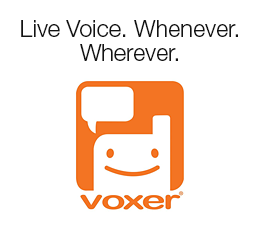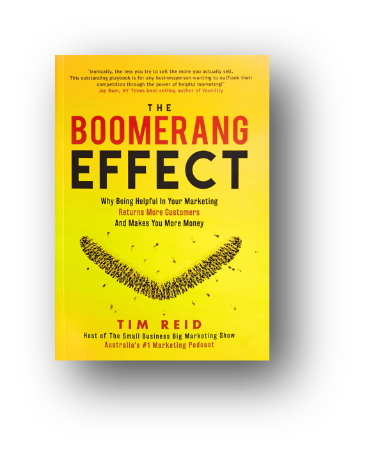You’re doing a killer job marketing your products online. Traffic is up. Conversions are up. It’s everything you ever dreamed an eCommerce campaign could be.
But there is no such thing as paradise. As soon as one thing works, another seems to break. Suddenly your physical locations are underperforming. What can you do?
You’re in luck. Once you have established an online presence, you can leverage that presence to drive foot traffic to physical locations.
Hyperlocal marketing targets specific regions, identifying web traffic within that region and marketing to shoppers with community focused messaging and content. It is a powerful way for physical storefronts to attract more shoppers, and many businesses still do not use hyperlocal marketing like you will after your read this article, providing an opportunity we think eCommerce merchants should exploit.
Hyperlocal Marketing: Send Web Traffic to Physical Store Locations
Hyperlocal marketing relies on targeting individual regions, which means the first thing you need to do is decide what locality you would like to target. A hyperlocal market can be anything from a city (like Sydney), to a zip code (like Manly, Sydney 2095), a street (Macquarie Street), or even a specific office space or neighborhood.
These 4 tips will help you reach your hyperlocal market in the most effective and efficient way.
Snapchat’s Geo-Targeted Advertising:
With over 150 million daily users worldwide, Snapchat is becoming an extremely powerful tool for local stores to get their face, or filter, out there. But not nearly as many people know about Snapchat’s geofilters, one very effective means businesses to get their name out to foot traffic in the area.
If you want to attract younger shoppers to your store, definitely get out there and experiment with Snapchat. The interface is simple. Users take a picture and then choose a static filter for the image. They then post the image on their story (a 24 hour collection of their snaps) or send it to friends.
Selfie filters are a more complicated option. The design requires algorithmic integration with faces and are usually more expensive, hence why only big brands utilize them (Walking Dead turns users into zombies, NFL gives users a helmet, etc). This stuff was sci-fi a year ago. Now it’s a marketing option.
But even smaller businesses can create their own filters, map them on a geofence, and buy them — all within one business day. These on-demand business filters are great for short-term events.
Creating the perfect geofilter requires some design and marketing savvy. Try not to be overly promotional; create clean, attractive designs.
For example, adding a great design with a breezy fan that says “Sydney Beats the Heat” with a subtext of something like “with ACME Air Conditioners” and setting the geotag to the specific area near the store in Sydney in summer is a non-intrusive way to get the business name out there, and also potentially reach thousands of potential customers.
Community Specific Content
Have you discovered the power that can be harnessed through creating good content on your blog, yet?
A good content strategy is the backbone of any successful SEO campaign; specific targeting is the backbone of any successful content strategy. .
Community specific content allows you to enter the local discussion with the citizens of your specific hyperlocal area. Creating content that appeals to your target audience is an excellent way to start gathering a local audience online. This local audience could then be converted into direct foot-traffic.
For example, if you have a bike shop in Sydney’s Manly neighborhood with the postcode 2095, you might want to research what the Manly demographic is like, and where your industry fits in. If you’re familiar with Manly, you’ve probably heard of how bad traffic can be. This has pushed hundreds of commuters to get bikes for their daily work commutes. There’s your audience. Creating content like “10 Fastest Bike Routes to Get to Downtown from Manly” or “Safest Biking Streets in Manly” would be a phenomenal way to reach your audience.
Integrate your community specific content with Facebook advertising and you’ve got a knockout combination for driving traffic (no pun intended) to your site, and eventually your store. Set your Facebook ad locations to “2095” and maybe sprinkle in some relevant interests and you’re hitting your hyperlocal market with information they would likely find useful.
Network with Local Community News Sites
Creating quality, community-specific content on your site is a great first step, Next you need to achieve more visibility within the community. Fortunately, there are likely dozens of blogs in your city that have taken on the role of being a primary source of community content and have gathered large local audiences.
A community site focused on your hyperlocal market likely includes directories where businesses are able to claim their listing. This is pretty standard procedure for local SEO, but most businesses only touch the tip of the iceberg with this strategy.
Fostering a good relationship with these community sites not only allows you to push sponsored content to their readers, but you might also get the opportunity to guest post on their site. Guest posting establishes you as a figure in the local ecosystem and also can give your site a boost in local search rankings, not to mention the extra traffic who read your guest post and then click a hyperlink back to your website.
Having good content on your blog keeps traffic from your guest post on your site, and the more community specific and industry specific your content the more likely that traffic will convert into foot traffic in your local store.
Check-in Discounts
No matter how sophisticated telecommunications technology becomes, it will never beat a good sale.
If you want more foot traffic, ask for it! Incentivize active clients to “check-in” at your location. This can be done on Facebook or Instagram.
Offering $1 or 10% off at checkout is not only a great deal for consumers. By checking in, those users are vetting the physical location as one that exists, and offers a service worthy of payment.
Hyperlocal strategies can also be put into place for multiple stores spread over different geographic locations. Since those locations are established as local businesses online, this blanket strategy could be used to create pockets of influence across the country without mixing up traffic on the business’ main page.
Conclusion.
Yesterday, you were telling brick & mortar shoppers to follow you on Instagram; now, you are telling web traffic to visit your stores. It is a topsy-turvy world, but there are exciting innovations ahead.
By knowing how to market local stores as an online retailer, you can leverage your online presence and drive traffic to your physical locations.









